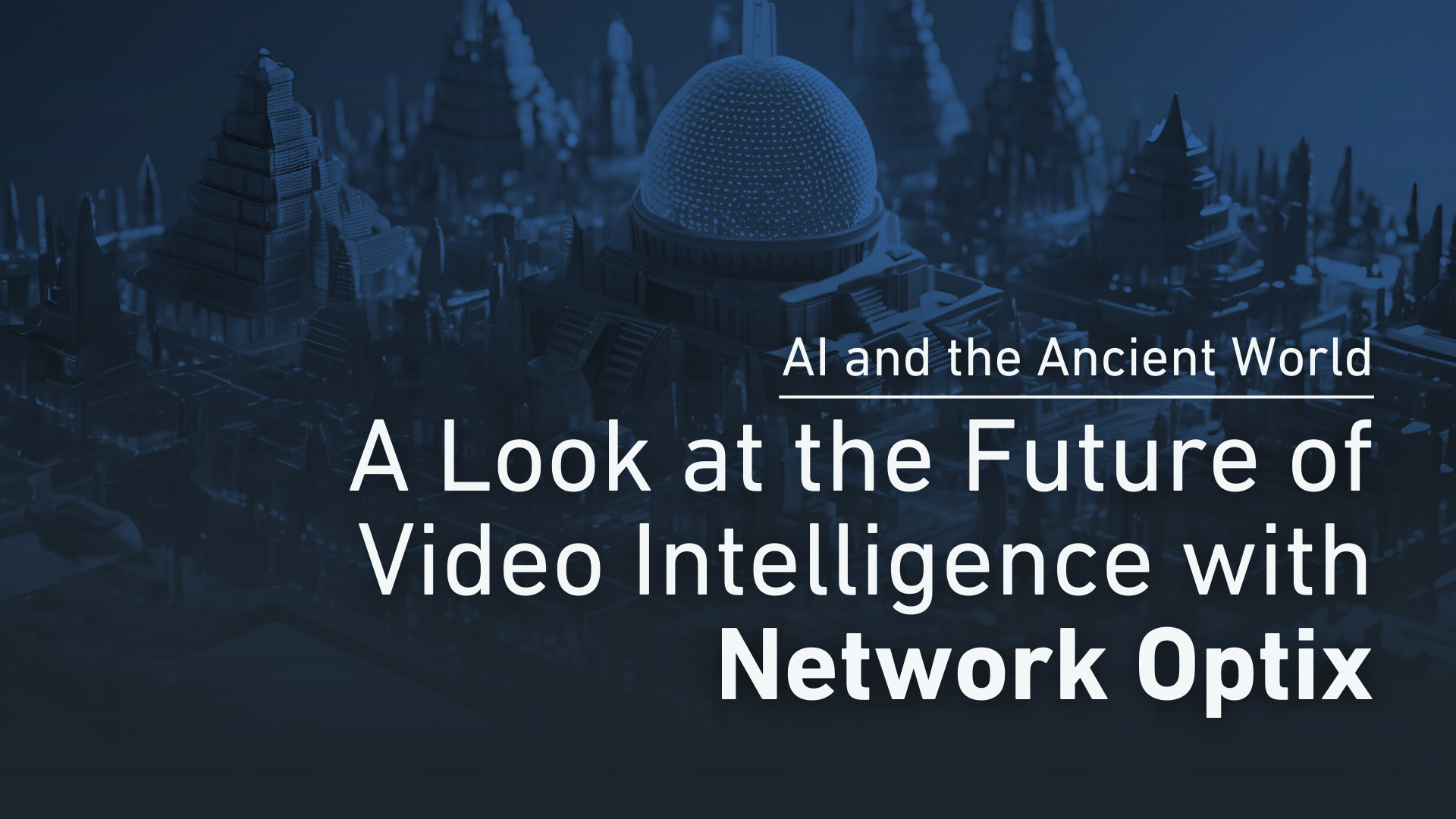AI and the Ancient World: A Look at the Future of Video Intelligence with Network Optix
Each month, we explore a different potential video intelligence (VI) application that could be built on the Nx EVOS platform. This month, we’re turning our attention to archaeology, imagining how VI might help reconstruct and preserve lost historical artifacts, texts, and even entire structures lost to time.
Using AI and Video to Rebuild Our Lost History
History is a fragile tapestry, vulnerable to war, natural disasters, and the inevitable passage of time. From ancient manuscripts to iconic landmarks, humanity has lost countless treasures that once defined our culture and identity. But what if technology could offer a way to restore what has been lost?
With a solution powered by Nx EVOS, intelligent video analysis and AI could become invaluable tools for archaeologists and historians in reconstructing ancient artifacts, deciphering damaged texts, and even digitally rebuilding structures long since destroyed.
Reconstructing Artifacts: Piecing Together the Past
The loss of cultural artifacts—whether from catastrophic events or centuries of decay—leaves significant gaps in our understanding of history. But what if technology could help piece these fragments back together? An AI-driven solution built on Nx EVOS could analyze high-resolution video of excavation sites, artifact fragments, and historical images to assist in reconstruction efforts.
Imagine a collection of ancient pottery shattered over centuries. Video Intelligence could study the shapes, textures, and patterns of the fragments, using AI to identify how the pieces fit together. By cross-referencing similar designs from the same era, it could even fill in missing details, creating a detailed digital model of the original artifact.
This approach wouldn’t just preserve historical objects—it could give historians and educators a new way to explore and share their insights about the past with the world.

Decoding Ancient Texts: From Fragment to Understanding
Texts from ancient civilizations often hold the key to understanding their worldviews, but many have been damaged or lost to time. A solution built on Nx EVOS could provide the tools to assist in deciphering these fragments.
Using video analysis of damaged manuscripts or inscriptions, such a system could identify faint markings, infer missing sections, and suggest possible reconstructions based on based on linguistic patterns and historical databases. For example, if only part of a sentence remains visible on a fragment of scroll, AI could predict the missing words using contextual clues and knowledge of the language.
This isn’t about replacing human expertise—it’s about giving historians a powerful tool to fill in the blanks, advancing their work while preserving the authenticity of the original artifact.
Rebuilding Structures: Breathing Life into Lost Spaces
Entire cities and landmarks have been reduced to ruins over the centuries, leaving only hints of what once stood. By analyzing video and image data from archaeological digs, satellite imagery, and historical photographs, an AI-powered system built on Nx EVOS could generate virtual reconstructions of lost buildings and spaces.
For example, AI might take fragmented columns or foundations and extrapolate their original form using known architectural styles and techniques from the same period. Advanced modeling could even produce 3D visualizations, enabling archaeologists to explore these spaces digitally and understand how they might have looked and functioned.
Beyond academic research, this technology could enhance museum exhibits or create immersive educational experiences, giving people the chance to "walk through" history in a way never before possible.
Nx EVOS: A Platform for Imagining New Possibilities
Nx EVOS, with its flexible architecture and robust AI integration capabilities—enabled by Nx AI Manager—provides the tools to envision solutions like these. While these ideas remain hypothetical, they illustrate the incredible potential of AI and video analysis to solve complex challenges, revealing insights about the past that were once thought lost forever.
Conclusion: Building Bridges to the Past
The reconstruction of history is more than an academic pursuit—it’s about connecting with our shared human story. By enabling the development of intelligent, data-driven solutions, platform like Nx EVOS could transform how we rediscover and preserve the past, from piecing together ancient artifacts to creating immersive reconstructions of lost civilizations.
While the technology to fully realize these concepts is still evolving, the possibilities are boundless. One day, the convergence of AI and video analysis could turn our collective dream of restoring the past into reality, preserving humanity’s legacy for generations to come.


